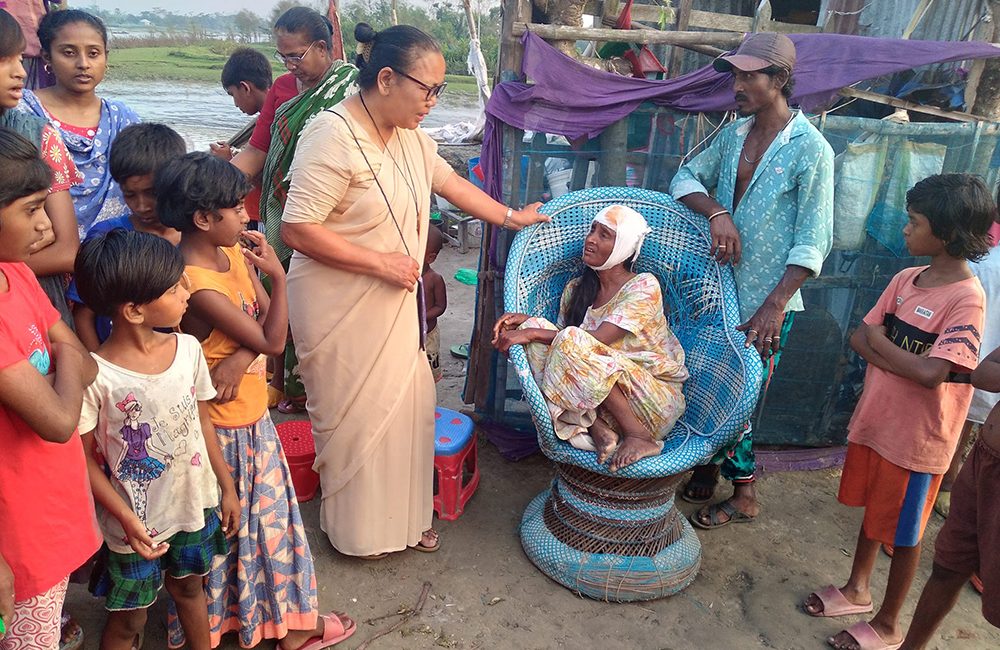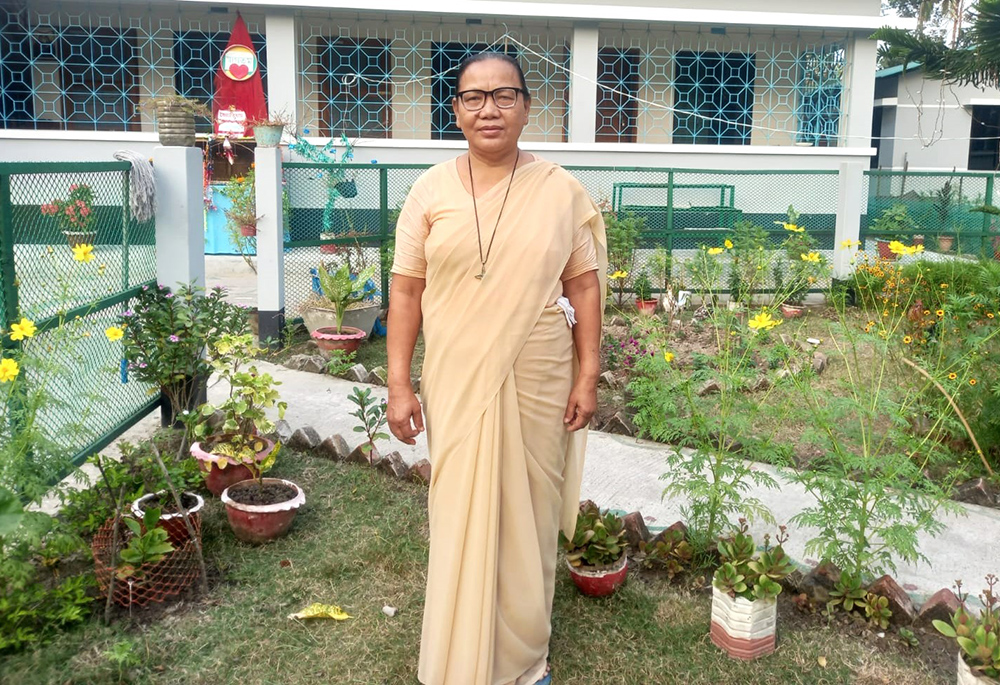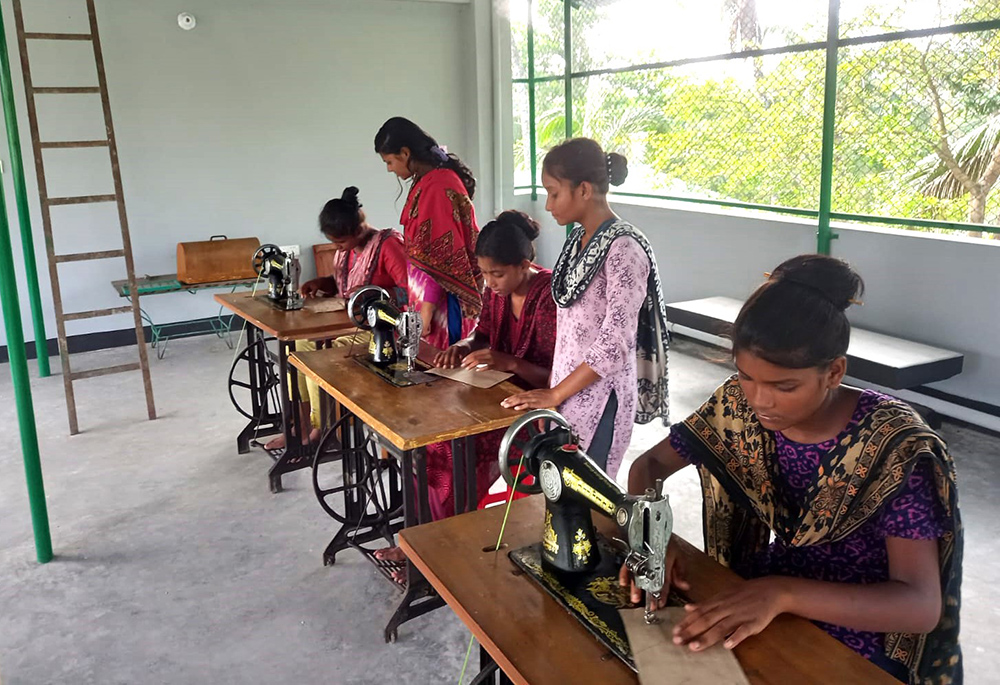
Our Lady of the Missions (or RNDM) Sr. Minita Bridgita Chisim, 60, in addition to her pastoral work, trains poor girls in her work area to sew. She came from a Garo tribal family living in poverty, went to work in the garment industry and later left to join the congregation in 1988.
Born in 1964, Chisim was one of 11 siblings. She left her mother when she was only 2 and studied up to grade 10. She took her first vows in 1992 and final vows in 1998.
Chisim recently spoke with Global Sisters Report about her vocation to become a sister from a poor family and work in Bangladesh. She believes it is God’s will that she teaches tailoring to people who are unemployed and living in poverty.
Chisim: I studied until 10th grade at St. Teresa’s High School, a missionary school. My family is very poor, [and] there were so many siblings. So, my father did not agree that I study further; he said I should work to help him financially.
No, I went to different places but didn’t get any help. An NGO agreed to pay, but first, we would have to spend [the money], and then they would pay. I didn’t have that money. So, I didn’t study anymore.

After that?
Later, I saw several girls going to work in the garment industry. Since I was not studying, I thought I should at least work to help my father financially. I contacted the “garment” and went to work. I went there and learned the work. But it didn’t last for long.
However, I had a new experience there, mingling with different types of people and seeing their lives. Best of all, I learned [how to use] my sewing machine in the few months [I was] there. I was [also] able to learn cloth cutting.
My cousin is a priest. He stopped me from working in the garment industry, and it was through him that I was inspired to become a sister. One day, I got a letter from the RNDM sister house and applied to the community through my cousin. I was asked to join the newcomers as soon as possible.
I had seen the Salesian Sisters of Mary Immaculate working in the area since I could reason. I used to see them, but not that often. But seeing their white clothes attracted me, and I observed them as angels. Since then, I wanted to become a sister. I could see holiness in the sisters’ dress.
The “garment” where I worked was 80% tribal girls. They taught girls to work and then made them work. I went to Dhaka for the first time and was educated among [those] girls. Many times, women were physically and mentally abused.
In [the past], men did not allow girls to work. In Muslim-majority countries, if girls wear veils, they are not allowed to work in the garment industry. They thought working in this sector meant girls were bad.
It cannot be said that they are getting fair wages. Because they are not paid according to market prices, these workers live in unhygienic houses in poor areas. They cannot eat three meals with their children.
Those who own the “garment” are profiting. As a result, we see [workers] protesting on the streets to demand an increase in wages or unpaid wages. Many times, as a result of these protests, many workers have to be fired. So, we can say that garment workers in Bangladesh are not well.
No, those who work as tailors are not living decent lives either. Their work depends on events, like when people go to them on various religious occasions to make new clothes. At that time, they get a little profit. They don’t have much work throughout the year.
My aim is to teach them how to make their own clothes instead of buying them. If one of them goes to work in the garment industry, she will be ahead of others. And if someone wants to do business and other work, she can do that too. In other words, I teach this work along with the pastoral work so that no one is unemployed.

When I became a sister in 1992, wherever I went, I taught sewing and embroidery to the poor girls of the neighborhood. I enjoy doing it. If I see that someone has improved their quality of life, I am happier.
My only challenge is that I teach poor people, and many cannot afford sewing machines. In that case, they cannot practice at home. Those who go home and sew clothes for their families cannot do so because of a lack of machines. Also, I can’t afford to buy a sewing machine for each. They are very poor, [and] most of them [live] hand to mouth. However, I am showing them another way.
I am a house animator and also do pastoral work. But our pastoral work is no longer daily or all day. Again, I don’t teach sewing every day, either. When I have to give a religious class, I give class, and when I have to go on a village visit, I visit. Meanwhile, I teach sewing. This does not harm my pastoral work. I believe teaching sewing is also God’s work, as I am doing it for the poor.
by Stephan Uttom Rozario (Global Sisters Report)